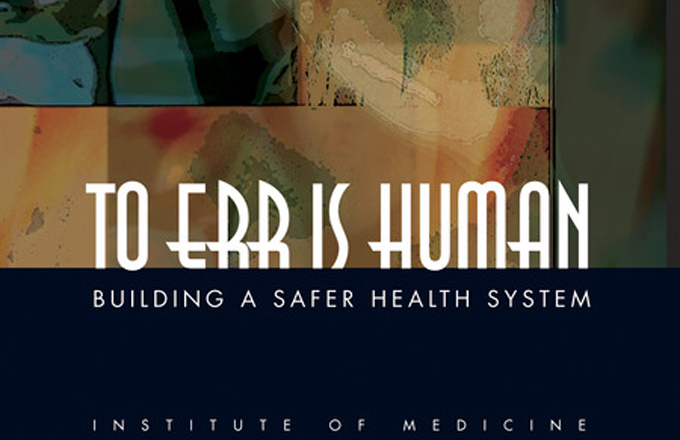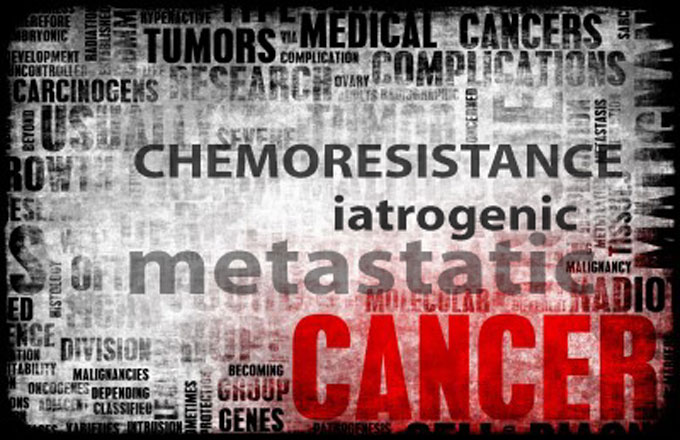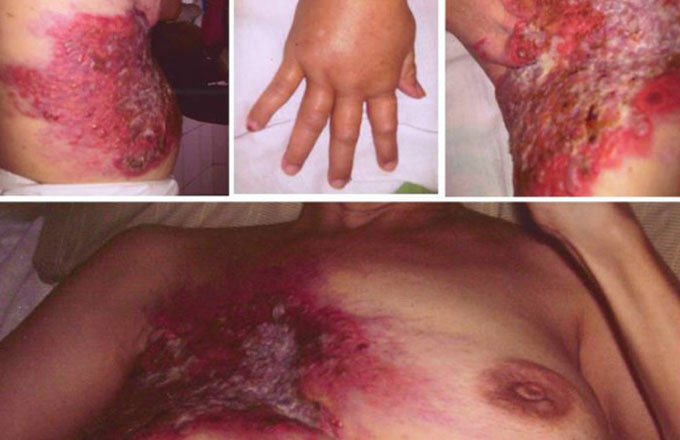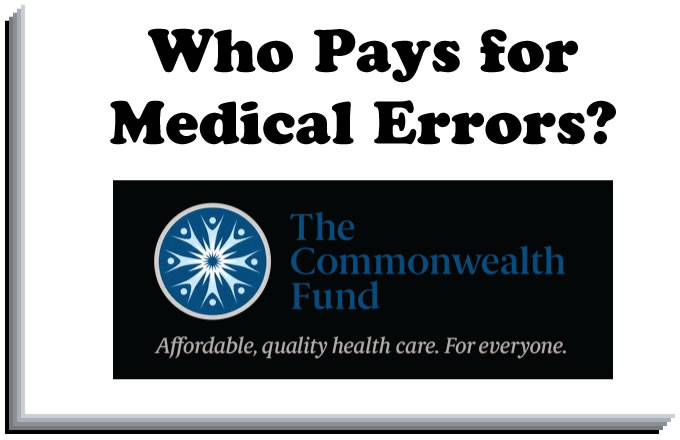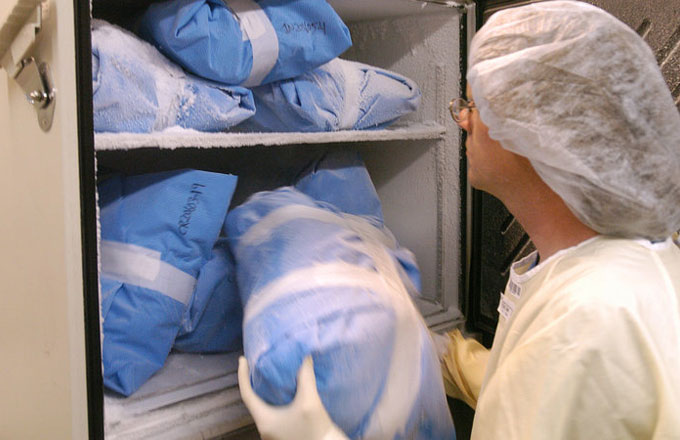Executive Summary
The knowledgeable health reporter for the Boston Globe, Betsy Lehman, died from an overdose during chemotherapy. Willie King had the wrong leg amputated. Ben Kolb was eight years old when he died during ''minor" surgery due to a drug mix-up.1
These horrific cases that make the headlines are just the tip of the iceberg. Two large studies, one conducted in Colorado and Utah and the other in New York, found that adverse events occurred in 2.9 and 3.7 percent of hospitalizations, respectively.2 In Colorado and Utah hospitals, 6.6 percent of adverse events led to death, as compared with 13.6 percent in New York hospitals. In both of these studies, over half of these adverse events resulted from medical errors and could have been prevented.
When extrapolated to the over 33.6 million admissions to U.S. hospitals in 1997, the results of the study in Colorado and Utah imply that at least 44,000 Americans die each year as a result of medical errors.3 The results of the New York Study suggest the number may be as high as 98,000.4 Even when using the lower estimate, deaths due to medical errors exceed the number attributable to the 8th-leading cause of death.5 More people die in a given year as a result of medical errors than from motor vehicle accidents (43,458), breast cancer (42,297), or AIDS (16,516).6
Total national costs (lost income, lost household production, disability and health care costs) of preventable adverse events (medical errors resulting in injury) are estimated to be between $17 billion and $29 billion, of which health care costs represent over one-half.7
In terms of lives lost, patient safety is as important an issue as worker safety. Every year, over 6,000 Americans die from workplace injuries.8 Medication errors alone, occurring either in or out of the hospital, are estimated to account for over 7,000 deaths annually.9
Medication-related errors occur frequently in hospitals and although not all result in actual harm, those that do, are costly. One recent study conducted at two prestigious teaching hospitals, found that about two out of every 100 admissions experienced a preventable adverse drug event, resulting in average increased hospital costs of $4,700 per admission or about $2.8 million annually for a 700-bed teaching hospital.10 If these findings are generalizable, the increased hospital costs alone of preventable adverse drug events affecting inpatients are about $2 billion for the nation as a whole.
These figures offer only a very modest estimate of the magnitude of the problem since hospital patients represent only a small proportion of the total population at risk, and direct hospital costs are only a fraction of total costs. More care and increasingly complex care is provided in ambulatory settings. Outpatient surgical centers, physician offices and clinics serve thousands of patients daily. Home care requires patients and their families to use complicated equipment and perform follow-up care. Retail pharmacies play a major role in filling prescriptions for patients and educating them about their use. Other institutional settings, such as nursing homes, provide a broad array of services to vulnerable populations. Although many of the available studies have focused on the hospital setting, medical errors present a problem in any setting, not just hospitals.
Errors are also costly in terms of opportunity costs. Dollars spent on having to repeat diagnostic tests or counteract adverse drug events are dollars unavailable for other purposes. Purchasers and patients pay for errors when insurance costs and copayments are inflated by services that would not have been necessary had proper care been provided. It is impossible for the nation to achieve the greatest value possible from the billions of dollars spent on medical care if the care contains errors.
But not all the costs can be directly measured. Errors are also costly in terms of loss of trust in the system by patients and diminished satisfaction by both patients and health professionals. Patients who experience a longer hospital stay or disability as a result of errors pay with physical and psychological discomfort. Health care professionals pay with loss of morale and frustration at not being able to provide the best care possible. Employers and society, in general, pay in terms of lost worker productivity, reduced school attendance by children, and lower levels of population health status.
Yet silence surrounds this issue. For the most part, consumers believe they are protected. Media coverage has been limited to reporting of anecdotal cases. Licensure and accreditation confer, in the eyes of the public, a "Good Housekeeping Seal of Approval." Yet, licensing and accreditation processes have focused only limited attention on the issue, and even these minimal efforts have confronted some resistance from health care organizations and providers. Providers also perceive the medical liability system as a serious impediment to systematic efforts to uncover and learn from errors.11
The decentralized and fragmented nature of the health care delivery system (some would say "nonsystem") also contributes to unsafe conditions for patients, and serves as an impediment to efforts to improve safety. Even within hospitals and large medical groups, there are rigidly-defined areas of specialization and influence. For example, when patients see multiple providers in different settings, none of whom have access to complete information, it is easier for something to go wrong than when care is better coordinated. At the same time, the provision of care to patients by a collection of loosely affiliated organizations and providers makes it difficult to implement improved clinical information systems capable of providing timely access to complete patient information. Unsafe care is one of the prices we pay for not having organized systems of care with clear lines of accountability.
Lastly, the context in which health care is purchased further exacerbates these problems. Group purchasers have made few demands for improvements in safety.12 Most third party payment systems provide little incentive for a health care organization to improve safety, nor do they recognize and reward safety or quality.
The goal of this report is to break this cycle of inaction. The status quo is not acceptable and cannot be tolerated any longer. Despite the cost pressures, liability constraints, resistance to change and other seemingly insurmountable barriers, it is simply not acceptable for patients to be harmed by the same health care system that is supposed to offer healing and comfort. "First do no harm" is an often quoted term from Hippocrates.13 Everyone working in health care is familiar with the term. At a very minimum, the health system needs to offer that assurance and security to the public.
A comprehensive approach to improving patient safety is needed. This approach cannot focus on a single solution since there is no "magic bullet" that will solve this problem, and indeed, no single recommendation in this report should be considered as the answer. Rather, large, complex problems require thoughtful, multifaceted responses. The combined goal of the recommendations is for the external environment to create sufficient pressure to make errors costly to health care organizations and providers, so they are compelled to take action to improve safety. At the same time, there is a need to enhance knowledge and tools to improve safety and break down legal and cultural barriers that impede safety improvement. Given current knowledge about the magnitude of the problem, the committee believes it would be irresponsible to expect anything less than a 50 percent reduction in errors over five years.
In this report, safety is defined as freedom from accidental injury. This definition recognizes that this is the primary safety goal from the patient's perspective. Error is defined as the failure of a planned action to be completed as intended or the use of a wrong plan to achieve an aim. According to noted expert James Reason, errors depend on two kinds of failures: either the correct action does not proceed as intended (an error of execution) or the original intended action is not correct (an error of planning).14 Errors can happen in all stages in the process of care, from diagnosis, to treatment, to preventive care.
Not all errors result in harm. Errors that do result in injury are sometimes called preventable adverse events. An adverse event is an injury resulting from a medical intervention, or in other words, it is not due to the underlying condition of the patient. While all adverse events result from medical management, not all are preventable (i.e., not all are attributable to errors). For example, if a patient has surgery and dies from pneumonia he or she got postoperatively, it is an adverse event. If analysis of the case reveals that the patient got pneumonia because of poor hand washing or instrument cleaning techniques by staff, the adverse event was preventable (attributable to an error of execution). But the analysis may conclude that no error occurred and the patient would be presumed to have had a difficult surgery and recovery (not a preventable adverse event).
Much can be learned from the analysis of errors. All adverse events resulting in serious injury or death should be evaluated to assess whether improvements in the delivery system can be made to reduce the likelihood of similar events occurring in the future. Errors that do not result in harm also represent an important opportunity to identify system improvements having the potential to prevent adverse events. Preventing errors means designing the health care system at all levels to make it safer. Building safety into processes of care is a more effective way to reduce errors than blaming individuals (some experts, such as Deming, believe improving processes is the only way to improve quality15). The focus must shift from blaming individuals for past errors to a focus on preventing future errors by designing safety into the system. This does not mean that individuals can be careless. People must still be vigilant and held responsible for their actions. But when an error occurs, blaming an individual does little to make the system safer and prevent someone else from committing the same error.
Health care is a decade or more behind other high-risk industries in its attention to ensuring basic safety. Aviation has focused extensively on building safe systems and has been doing so since World War II. Between 1990 and 1994, the U.S. airline fatality rate was less than one-third the rate experienced in mid century.16 In 1998, there were no deaths in the United States in commercial aviation. In health care, preventable injuries from care have been estimated to affect between three to four percent of hospital patients.17 Although health care may never achieve aviation's impressive record, there is clearly room for improvement.
To err is human, but errors can be prevented. Safety is a critical first step in improving quality of care. The Harvard Medical Practice Study, a seminal research study on this issue, was published almost ten years ago; other studies have corroborated its findings. Yet few tangible actions to improve patient safety can be found. Must we wait another decade to be safe in our health system?
Recommendations
The IOM Quality of Health Care in America Committee was formed in June 1998 to develop a strategy that will result in a threshold improvement in quality over the next ten years. This report addresses issues related to patient safety, a subset of overall quality-related concerns, and lays out a national agenda for reducing errors in health care and improving patient safety. Although it is a national agenda, many activities are aimed at prompting responses at the state and local levels and within health care organizations and professional groups.
The committee believes that although there is still much to learn about the types of errors committed in health care and why they occur, enough is known today to recognize that a serious concern exists for patients. Whether a person is sick or just trying to stay healthy, they should not have to worry about being harmed by the health system itself. This report is a call to action to make health care safer for patients.
The committee believes that a major force for improving patient safety is the intrinsic motivation of health care providers, shaped by professional ethics, norms and expectations. But the interaction between factors in the external environment and factors inside health care organizations can also prompt the changes needed to improve patient safety. Factors in the external environment include availability of knowledge and tools to improve safety, strong and visible professional leadership, legislative and regulatory initiatives, and actions of purchasers and consumers to demand safety improvements. Factors inside health care organizations include strong leadership for safety, an organizational culture that encourages recognition and learning from errors, and an effective patient safety program.
In developing its recommendations, the committee seeks to strike a balance between regulatory and market-based initiatives, and between the roles of professionals and organizations. No single action represents a complete answer, nor can any single group or sector offer a complete fix to the problem. However, different groups can, and should, make significant contributions to the solution. The committee recognizes that a number of groups are already working on improving patient safety, such as the National Patient Safety Foundation and the Anesthesia Patient Safety Foundation.
The recommendations contained in this report lay out a four-tiered approach:
• establishing a national focus to create leadership, research, tools and protocols to enhance the knowledge base about safety;
• identifying and learning from errors through immediate and strong mandatory reporting efforts, as well as the encouragement of voluntary efforts, both with the aim of making sure the system continues to be made safer for patients;
• raising standards and expectations for improvements in safety through the actions of oversight organizations, group purchasers, and professional groups; and
• creating safety systems inside health care organizations through the implementation of safe practices at the delivery level. This level is the ultimate target of all the recommendations.
Leadership and Knowledge
Other industries that have been successful in improving safety, such as aviation and occupational health, have had the support of a designated agency that sets and communicates priorities, monitors progress in achieving goals, directs resources toward areas of need, and brings visibility to important issues. Although various agencies and organizations in health care may contribute to certain of these activities, there is no focal point for raising and sustaining attention to patient safety. Without it, health care is unlikely to match the safety improvements achieved in other industries.
The growing awareness of the frequency and significance of errors in health care creates an imperative to improve our understanding of the problem and devise workable solutions. For some types of errors, the knowledge of how to prevent them exists today. In these areas, the need is for widespread dissemination of this information. For other areas, however, additional work is needed to develop and apply the knowledge that will make care safer for patients. Resources invested in building the knowledge base and diffusing the expertise throughout the industry can pay large dividends to both patients and the health professionals caring for them and produce savings for the health system.
RECOMMENDATION 4.1 Congress should create a Center for Patient Safety within the Agency for Healthcare Research and Quality. This center should
• set the national goals for patient safety, track progress in meeting these goals, and issue an annual report to the President and Congress on patient safety; and
• develop knowledge and understanding of errors in health care by developing a research agenda, funding Centers of Excellence, evaluating methods for identifying and preventing errors, and funding dissemination and communication activities to improve patient safety.
To make significant improvements in patient safety, a highly visible center is needed, with secure and adequate funding. The Center should establish goals for safety; develop a research agenda; define prototype safety systems; develop and disseminate tools for identifying and analyzing errors and evaluate approaches taken; develop tools and methods for educating consumers about patient safety; issue an annual report on the state of patient safety, and recommend additional improvements as needed.
The committee recommends initial annual funding for the Center of $30 to $35 million. This initial funding would permit a center to conduct activities in goal setting, tracking, research and dissemination. Funding should grow over time to at least $100 million, or approximately 1% of the $8.8 billion in health care costs attributable to preventable adverse events.18
This initial level of funding is modest relative to the resources devoted to other public health issues. The Center for Patient Safety should be created within the Agency for Healthcare Research and Quality because the agency is already involved in a broad range of quality and safety issues, and has established the infrastructure and experience to fund research, educational and coordinating activities.
Identifying and Learning from Errors
Another critical component of a comprehensive strategy to improve patient safety is to create an environment that encourages organizations to identify errors, evaluate causes and take appropriate actions to improve performance in the future. External reporting systems represent one mechanism to enhance our understanding of errors and the underlying factors that contribute to them.
Reporting systems can be designed to meet two purposes. They can be designed as part of a public system for holding health care organizations accountable for performance. In this instance, reporting is often mandatory, usually focuses on specific cases that involve serious harm or death, may result in fines or penalties relative to the specific case, and information about the event may become known to the public. Such systems ensure a response to specific reports of serious injury, hold organizations and providers accountable for maintaining safety, respond to the public's right to know, and provide incentives to health care organizations to implement internal safety systems that reduce the likelihood of such events occurring. Currently, at least twenty states have mandatory adverse event reporting systems.
Voluntary, confidential reporting systems can also be part of an overall program for improving patient safety and can be designed to complement the mandatory reporting systems previously described. Voluntary reporting systems, which generally focus on a much broader set of errors and strive to detect system weaknesses before the occurrence of serious harm, can provide rich information to health care organizations in support of their quality improvement efforts.
For either purpose, the goal of reporting systems is to analyze the information they gather and identify ways to prevent future errors from occurring. The goal is not data collection. Collecting reports and not doing anything with the information serves no useful purpose. Adequate resources and other support must be provided for analysis and response to critical issues.
RECOMMENDATION 5.1 A nationwide mandatory reporting system should be established that provides for the collection of standardized information by state governments about adverse events that result in death or serious harm. Reporting should initially be required of hospitals and eventually be required of other institutional and ambulatory care delivery settings. Congress should
• designate the National Forum for Health Care Quality Measurement and Reporting as the entity responsible for promulgating and maintaining a core set of reporting standards to be used by states, including a nomenclature and taxonomy for reporting;
• require all health care organizations to report standardized information on a defined list of adverse events;
• provide funds and technical expertise for state governments to establish or adapt their current error reporting systems to collect the standardized information, analyze it and conduct follow-up action as needed with health care organizations. Should a state choose not to implement the mandatory reporting system, the Department of Health and Human Services should be designated as the responsible entity; and
• designate the Center for Patient Safety to:
(1) convene states to share information and expertise, and to evaluate alternative approaches taken for implementing reporting programs, identify best practices for implementation, and assess the impact of state programs; and
(2) receive and analyze aggregate reports from states to identify persistent safety issues that require more intensive analysis and/or a broader-based response (e.g., designing prototype systems or requesting a response by agencies, manufacturers or others).
RECOMMENDATION 5.2 The development of voluntary reporting efforts should be encouraged. The Center for Patient Safety should
• describe and disseminate information on external voluntary reporting programs to encourage greater participation in them and track the development of new reporting systems as they form;
• convene sponsors and users of external reporting systems to evaluate what works and what does not work well in the programs, and ways to make them more effective;
• periodically assess whether additional efforts are needed to address gaps in information to improve patient safety and to encourage health care organizations to participate in voluntary reporting programs; and
• fund and evaluate pilot projects for reporting systems, both within individual health care organizations and collaborative efforts among health care organizations.
The committee believes there is a role both for mandatory, public reporting systems and voluntary, confidential reporting systems. However, because of their distinct purposes, such systems should be operated and maintained separately. A nationwide mandatory reporting system should be established by building upon the current patchwork of state systems and by standardizing the types of adverse events and information to be reported. The newly established National Forum for Health Care Quality Measurement and Reporting, a public/private partnership, should be charged with the establishment of such standards. Voluntary reporting systems should also be promoted and the participation of health care organizations in them should be encouraged by accrediting bodies.
RECOMMENDATION 6.1 Congress should pass legislation to extend peer review protections to data related to patient safety and quality improvement that are collected and analyzed-by health care organizations for internal use or shared with others solely for purposes of improving safety and quality.
The committee believes that information about the most serious adverse events which result in harm to patients and which are subsequently found to result from errors should not be protected from public disclosure. However, the committee also recognizes that for events not falling under this category, fears about the legal discoverability of information may undercut motivations to detect and analyze errors to improve safety. Unless such data are assured protection, information about errors will continue to be hidden and errors will be repeated. A more conducive environment is needed to encourage health care professionals and organizations to identify, analyze, and report errors without threat of litigation and without compromising patients' legal rights.
Setting Performance Standards and Expectations for Safety
Setting and enforcing explicit standards for safety through regulatory and related mechanisms, such as licensing, certification, and accreditation, can define minimum performance levels for health care organizations and professionals. Additionally, the process of developing and adopting standards helps to form expectations for safety among providers and consumers. However, standards and expectations are not only set through regulations. The actions of purchasers and consumers affect the behaviors of health care organizations, and the values and norms set by health professions influence standards of practice, training and education for providers. Standards for patient safety can be applied to health care professionals, the organizations in which they work, and the tools (drugs and devices) they use to care for patients.
RECOMMENDATION 7.1 Performance standards and expectations for health care organizations should focus greater attention on patient safety.
• Regulators and accreditors should require health care organizations to implement meaningful patient safety programs with defined executive responsibility.
• Public and private purchasers should provide incentives to health care organizations to demonstrate continuous improvement in patient safety.
Health care organizations are currently subject to compliance with licensing and accreditation standards. Although both devote some attention to issues related to patient safety, there is opportunity to strengthen such efforts. Regulators and accreditors have a role in encouraging and supporting actions in health care organizations by holding them accountable for ensuring a safe environment for patients. After a reasonable period of time for health care organizations to develop patient safety programs, regulators and accreditors should require them as a minimum standard.
Purchaser and consumer demands also exert influence on health care organizations. Public and private purchasers should consider safety issues in their contracting decisions and reinforce the importance of patient safety by providing relevant information to their employees or beneficiaries. Purchasers should also communicate concerns about patient safety to accrediting bodies to support stronger oversight for patient safety.
RECOMMENDATION 7.2 Performance standards and expectations for health professionals should focus greater attention on patient safety.
• Health professional licensing bodies should
(1) implement periodic re-examinations and re-licensing of doctors, nurses, and other key providers, based on both competence and knowledge of safety practices; and
(2) work with certifying and credentialing organizations to develop more effective methods to identify unsafe providers and take action.
• Professional societies should make a visible commitment to patient safety by establishing a permanent committee dedicated to safety improvement. This committee should
(1) develop a curriculum on patient safety and encourage its adoption into training and certification requirements;
(2) disseminate information on patient safety to members through special sessions at annual conferences, journal articles and editorials, newsletters, publications and websites on a regular basis;
(3) recognize patient safety considerations in practice guidelines and in standards related to the introduction and diffusion of new technologies, therapies and drugs;
(4) work with the Center for Patient Safety to develop community-based, collaborative initiatives for error reporting and analysis and implementation of patient safety improvements; and
(5) collaborate with other professional societies and disciplines in a national summit on the professional's role in patient safety.
Although unsafe practitioners are believed to be few in number, the rapid identification of such practitioners and corrective action are important to a comprehensive safety program. Responsibilities for documenting continuing skills are dispersed among licensing boards, specialty boards and professional groups, and health care organizations with little communication or coordination. In their ongoing assessments, existing licensing, certification and accreditation processes for health professionals should place greater attention on safety and performance skills.
Additionally, professional societies and groups should become active leaders in encouraging and demanding improvements in patient safety. Setting standards, convening and communicating with members about safety, incorporating attention to patient safety into training programs and collaborating across disciplines are all mechanisms that will contribute to creating a culture of safety.
RECOMMENDATION 7.3 The Food and Drug Administration (FDA) should increase attention to the safe use of drugs in both preand post-marketing processes through the following actions:
• develop and enforce standards for the design of drug packaging and labeling that will maximize safety in use;
• require pharmaceutical companies to test (using FDA-approved methods) proposed drug names to identify and remedy potential sound-alike and look-alike confusion with existing drug names; and
• work with physicians, pharmacists, consumers, and others to establish appropriate responses to problems identified through postmarketing surveillance, especially for concerns that are perceived to require immediate response to protect the safety of patients.
The FDA's role is to regulate manufacturers for the safety and effectiveness of their drugs and devices. However, even approved products can present safety problems in practice. For example, different drugs with similar sounding names can create confusion for both patients and providers. Attention to the safety of products in actual use should be increased during approval processes and in post-marketing monitoring systems. The FDA should also work with drug manufacturers, distributors, pharmacy benefit managers, health plans and other organizations to assist clinicians in identifying and preventing problems in the use of drugs.
Implementing Safety Systems in Health Care Organizations
Experience in other high-risk industries has provided well-understood illustrations that can be used to improve health care safety. However, health care management and professionals have rarely provided specific, clear, high-level, organization-wide incentives to apply what has been learned in other industries about ways to prevent error and reduce harm within their own organizations. Chief Executive Officers and Boards of Trustees should be held accountable for making a serious, visible and on-going commitment to creating safe systems of care.
RECOMMENDATION 8.1 Health care organizations and the professionals affiliated with them should make continually improved patient safety a declared and serious aim by establishing patient safety programs with defined executive responsibility. Patient safety programs should
• provide strong, clear and visible attention to safety;
• implement non-punitive systems for reporting and analyzing errors within their organizations;
• incorporate well-understood safety principles, such as standardizing and simplifying equipment, supplies, and processes; and
• establish interdisciplinary team training programs for providers that incorporate proven methods of team training, such as simulation.
Health care organizations must develop a culture of safety such that an organization's care processes and workforce are focused on improving the reliability and safety of care for patients. Safety should be an explicit organizational goal that is demonstrated by the strong direction and involvement of governance, management and clinical leadership. In addition, a meaningful patient safety program should include defined program objectives, personnel, and budget and should be monitored by regular progress reports to governance.
RECOMMENDATION 8.2 Health care organizations should implement proven medication safety practices.
A number of practices have been shown to reduce errors in the medication process. Several professional and collaborative organizations interested in patient safety have developed and published recommendations for safe medication practices, especially for hospitals. Although some of these recommendations have been implemented, none have been universally adopted and some are not yet implemented in a majority of hospitals. Safe medication practices should be implemented in all hospitals and health care organizations in which they are appropriate.
Summary
This report lays out a comprehensive strategy for addressing a serious problem in health care to which we are all vulnerable. By laying out a concise list of recommendations, the committee does not underestimate the many barriers that must be overcome to accomplish this agenda. Significant changes are required to improve awareness of the problem by the public and health professionals, to align payment systems and the liability system so they encourage safety improvements, to develop training and education programs that emphasize the importance of safety and for chief executive officers and trustees of health care organizations to create a culture of safety and demonstrate it in their daily decisions.
Although no single activity can offer the solution, the combination of activities proposed offers a roadmap toward a safer health system. The proposed program should be evaluated after five years to assess progress in making the health system safer. With adequate leadership, attention and resources, improvements can be made. It may be part of human nature to err, but it is also part of human nature to create solutions, find better alternatives and meet the challenges ahead.
References
1. Cook, Richard; Woods, David; Miller, Charlotte, A Tale of Two Stories: Contrasting Views of Patient Safety. Chicago: National Patient Safety Foundation, 1998.
2. Brennan, Troyen A.; Leape, Lucian L.; Laird, Nan M., et al. Incidence of adverse events and negligence in hospitalized patients: Results of the Harvard Medical Practice Study I. N Engl J Med. 324:370–376, 1991. See also: Leape, Lucian L.; Brennan, Troyen A.; Laird, Nan M., et al. The Nature of Adverse Events in Hospitalized Patients: Results of the Harvard Medical Practice Study II. N Engl J Med. 324(6):377–384, 1991. See also: Thomas, Eric J.; Studdert, David M.; Burstin, Helen R., et al. Incidence and Types of Adverse Events and Negligent Care in Utah and Colorado. Med Careforthcoming Spring 2000.
3. American Hospital Association. Hospital Statistics. Chicago. 1999. See also: Thomas, Eric J.; Studdert, David M.; Burstin, Helen R., et al. Incidence and Types of Adverse Events and Negligent Care in Utah and Colorado. Med Care forthcoming Spring 2000. See also: Thomas, Eric J.; Studdert, David M.; Newhouse, Joseph P., et al. Costs of Medical Injuries in Utah and Colorado. Inquiry. 36:255–264, 1999.
4. American Hospital Association. Hospital Statistics. Chicago. 1999. See also: Brennan, Troyen A.; Leape, Lucian L.; Laird, Nan M., et al. Incidence of adverse events and negligence in hospitalized patients: Results of the Harvard Medical Practice Study I. N Engl J Med. 324:370–376, 1991. See also: Leape, Lucian L.; Brennan, Troyen A.; Laird, Nan M., et al. The Nature of Adverse Events in Hospitalized Patients: Results of the Harvard Medical Practice Study II. N Engl J Med. 324(6):377–384, 1991.
5. Centers for Disease Control and Prevention (National Center for Health Statistics). Deaths: Final Data for 1997. National Vital Statistics Reports. 47(19):27, 1999.
6. Centers for Disease Control and Prevention (National Center for Health Statistics). Births and Deaths: Preliminary Data for 1998. National Vital Statistics Reports. 47(25):6, 1999.
7. Thomas, Eric J.; Studdert, David M.; Newhouse, Joseph P., et al. Costs of Medical Injuries in Utah and Colorado. Inquiry. 36:255–264, 1999. See also: Johnson, W.G.;
Brennan, Troyen A.; Newhouse, Joseph P., et al. The Economic Consequences of Medical Injuries. JAMA. 267:2487–2492, 1992.
8. Occupational Safety and Health Administration. The New OSHA: Reinventing Worker Safety and Health [Web Page]. Dec. 16, 1998. Available at: www.osha.gov/oshinfo/reinvent.html.
9. Phillips, David P.; Christenfeld, Nicholas; and Glynn, Laura M. Increase in US Medication-Error Deaths between 1983 and 1993. The Lancet. 351:643–644, 1998.
10. Bates, David W.; Spell, Nathan; Cullen, David J., et al. The Costs of Adverse Drug Events in Hospitalized Patients. JAMA. 277:307–311, 1997.
11. Leape, Lucian; Brennan, Troyen; Laird, Nan; et al., The Nature of Adverse Events in Hospitalized Patients, Results of the Harvard Medical Practice Study II. N EnglJ Med. 324(6):377–384, 1991.
12. Milstein, Arnold, presentation at ''Developing a National Policy Agenda for Improving Patient Safety," meeting sponsored by National Patient Safety Foundation, Joint Commission on Accreditation of Health Care Organizations and American Hospital Association, July 15, 1999, Washington, D.C.
13. Veatch, Robert M., Cross-Cultural Perspectives in Medical Ethics: Readings. Boston: Jones and Bartlett Publishers, 1989.
14. Reason, James T., Human Error, Cambridge: Cambridge University Press, 1990.
15. Deming, W. Edwards, Out of the Crisis, Cambridge: Massachusetts Institute of Technology, Center for Advanced Engineering Study, 1993.
16. Berwick, Donald M. and Leape, Lucian L. Reducing Errors in Medicine. BMJ. 319:136–137, 1999.
17. Brennan, Troyen A.; Leape, Lucian L.; Laird, Nan M, et al. Incidence of Adverse Events and Negligence in Hospitalized Patients. N Eng J Med.324(6):370–376, 1991. See also: Thomas, Eric J.; Studden, David M.; Newhouse, Joseph P., et al. Costs of Medical Injuries in Utah and Colorado. Inquiry. 36:255–264, 1999.
18. Thomas, Eric J.; Studdert, David M.; Newhouse, Joseph P., et al. Costs of Medical Injuries in Utah and Colorado. Inquiry. 36:255–264, 1999.



